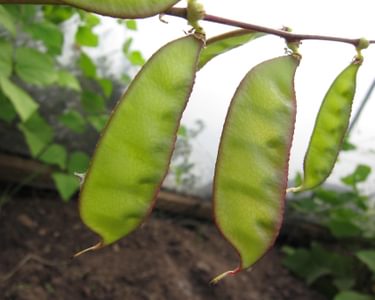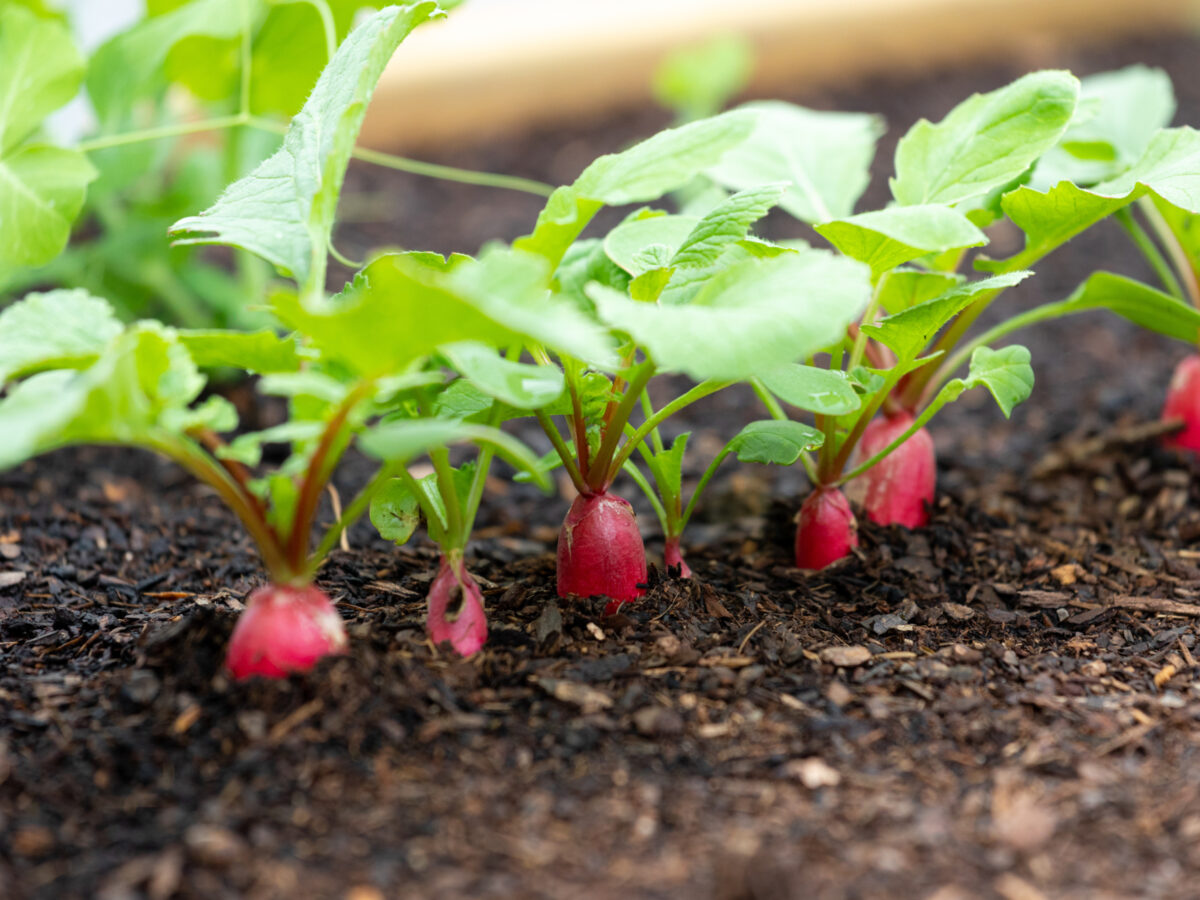
Lablab Beans
- Tags
- Vegetables and herbs
| Growing calendar | |
|---|---|
| Sow indoors | Mid-April |
| Harvest |
Lablab (Lablab purpureus syn Dolichos lablab) has beautiful flowers and is a decorative crop. Pods are incredibly variable with colours ranging from deep purple to a greyish white and speckled to plain green. They may have a sharp point at one end, be puffy, round or flat, scimitar shaped or blade-like.
The pods often have a peculiarly wrinkled and rough edge down the side, which doesn’t split. In some parts of India, the small, curved podded forms are eaten podded like green peas and called 'papri' or 'papapdi', while the long flatter types are known as 'liva'. The rounder, more French bean-like sorts are called 'val' or 'valor'. You will see these names in Asian grocery shops.
The lightly scented flowers can be carried singly or in dense spikes, hence one of the alternative names, hyacinth bean, and can be any colour from deep purple through pink to pure white.
There is some evidence that lablab plants grown from seeds saved in this country crop better and earlier as they are becoming more adapted to the climate in the UK. Some cultivars of lablab only flower in the equal day and night lengths of the tropics, but others are day neutral so will crop in the UK.
Sadly at present there is a very limited range of cultivars available in Britain and only ‘Ruby Moon’ is commonly sold, which is a decorative variety grown for its ornamental purple flowers. ‘Rongai’ and ‘Ipsa 2’ are both suitable for cultivation in our conditions, if you can locate a supply. Currently there is a climbing and dwarf variety available from Garden Organic’s Heritage Seed Library.
How to sow lablab
It’s not recommended to sow lablab directly outside in the UK, as the plant requires a long growing season. So sow two or three seeds in a general purpose, peat-free potting compost in one 9cm/3in pot indoors in mid April. Germination temperature is around 18-21oC/65-70oF. Seeds take two to four weeks to emerge.
Keep seedlings in a warm light place and pot up as they grow. Some cultivars climb, some are dwarf, but all rarely require support until they have at least five or six true leaves.
Growing lablab outdoors
Lablab can be transplanted outdoors but need a spot in full sun and shelter from cold winds. They prefer the better conditions in a polytunnel or cold greenhouse.
Once the weather is warm enough to transplant French beans, you can harden off the lablab and plant outside. Plant into well cultivated, fertile plot, ideally with a compost trench (as for runner beans) to help retain moisture.
Dwarf types often do better outdoors than climbers. Space plants 15cm/6in apart or 2 plants to a pole if climbers. If using a grow bag, allow three plants per bag: if in pots, a 30cm/12in pot is the minimum needed.

Lablab harvesting and use
Lablabs tend not to flower until quite late in the season, so you rarely have a glut (unlike runner or French beans), as the harvest time is so short. In some African cultures the young leaves are eaten as a green vegetable and are a valuable source of protein.
The flowers are self-fertile, like French beans. Pick lablabs as soon as they are large enough to eat, and still tender: the papri cultivars should be left until seeds have formed inside the pods and then podded like peas. They are best eaten as fresh as possible but can be stored a few days in the salad tray of a fridge.
Papri will freeze well if you are lucky enough to have a surplus. Blanch for one minute before freezing. Liva and val don’t store well so are best eaten fresh. Some strains may have seeds, which are toxic if eaten raw, so never eat raw lablab pods or beans, and when cooking boil hard for several minutes, like dried French beans. There's a popular belief that dark cultivars have more toxins than the white or green ones, but this is not necessarily true.
Troubleshooting
Keep plants well-watered in dry spells or they may drop pods. In cold wet weather the plants seem to stop growing altogether - but will recover and catch up if conditions improve.
Seed saving
Seed saving your own lablabs is easy as they don’t cross with other bean species, so the plants shouldn’t need isolating. Select a few plants to leave pods to ripen from the first, rather than picking for food, as this gives them the longest time to mature in our uncertain weather. Let pods hang on the plants until dry, or the first frosts, and dry out further on trays indoors before shelling and drying fully.
If you find a particularly good strain, it's sometimes possible to save the plant by digging up the (quite large) roots and storing them in a pot overwinter somewhere frost-free, like a dahlia.
| Growing notes | |
|---|---|
| Difficulty | Moderate to challenging |
| Germination time | 10-21 days |
| Average time to harvest | Three months plus |
| Equipment needed | Protected cropping area for all except very sheltered sites e.g central London |
| Average plant size | 2-2.5m |
| Family group to grow with | Legume |
| Key nutritional content | Vitamin A, B, K, copper, magnesium, manganese & potassium, protein, fibre (fresh pods) |
| Latin name | Lablab purpureus syn Dolichos lablab |
| Seed saving notes | Will not cross with other beans, but difficult unless good sunny summer allows pods to mature. Select very early set beans to improve cropping in UK. |

Love our growing advice?
Get a direct link to our horticultural advice team, as well as members-only online resources with a Garden Organic membership.